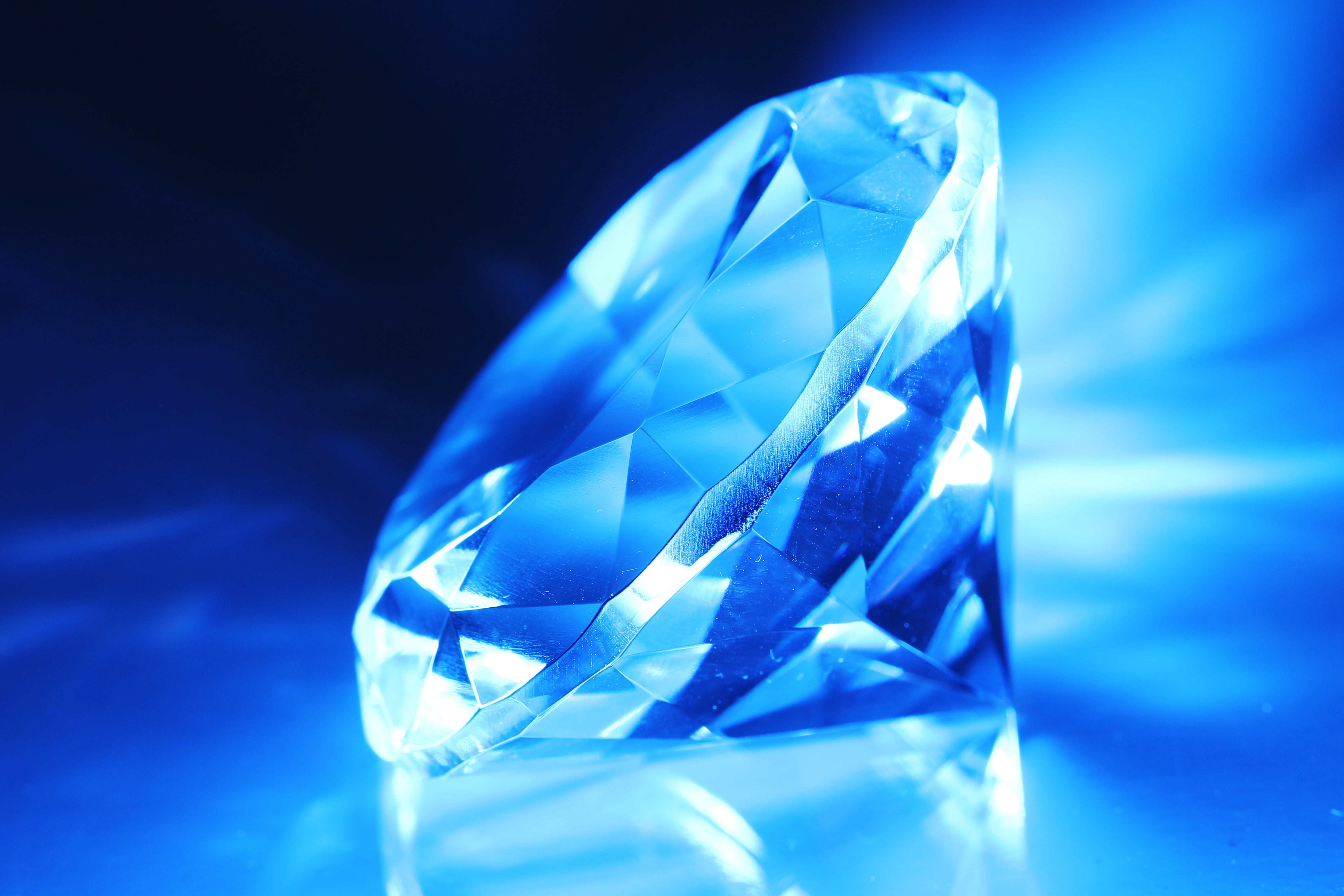The fluorescence of diamonds is a much discussed topic. But what exactly is fluorescence and what causes it? How does it affect the value of a diamond and what should you look for when buying such fluorescent stones? The most important information about diamond fluorescence can be found in this blog post.
What is fluorescence?
Strictly speaking, fluorescence is not a quality feature, but an identification feature. The certificates of the gemological laboratories therefore state whether a diamond has fluorescence and how strong it is. The fluorescence is classified on a five-point scale from “N” for “None”, i.e. no fluorescence, to “VS” for “Very Strong”, i.e. very strong fluorescence. In practice, fluorescence means that a diamond glows under UV radiation, in most cases blue. This is caused by inclusions of nitrogen, boron or aluminum. In rare cases, the fluorescence in colorless diamonds can also appear in a yellow hue, with fancy color diamonds an even broader color spectrum from green to pink or orange is possible. 25-30% of diamonds show fluorescence, but most of the time it is so weak that it is hardly noticeable. Only about 2-3.5% of all diamonds show medium, strong or very strong fluorescence.
Legitimate concerns about fluorescent diamonds?
There is some industry concern about fluorescent diamonds, they have a slightly poorer reputation and are less popular with buyers. This is due to a rare phenomenon where fluorescence causes the diamond to appear milky and less pure than it actually is. Although a study by the GIA found such haze in only 0.2% of fluorescent diamonds, some diamond traders still believe that fluorescence negatively affects a diamond's appearance. In fact, the opposite can even be the case. In the case of colorless diamonds with lower color grades, i.e. diamonds with a visible yellow tinge, blue fluorescence can visually enhance the diamond, as it neutralizes the yellowish base tone and makes the diamond appear lighter. It is unlikely that the diamond fluorescence will cause the gemstone to glow blue in everyday life and thus affect its appearance. In most cases, the fluorescence is really only visible under a UV lamp. Of course, sunlight also contains UV radiation, but that a fluorescent diamond glows blue from sunlight alone is the absolute exception.
What does fluorescence mean when buying a diamond?
Everyone has to decide for themselves whether buying a diamond with fluorescence is an option or not. However, one can take advantage of this feature on a lower budget. Fluorescent stones are cheaper on average because they are less in demand due to the reservations. As the fluorescence only in extremely rare cases results in a visible clouding of the diamond, fluorescent diamonds with an otherwise very good grade are therefore available at a lower price, although they are visually indistinguishable from diamonds without fluorescence. Nevertheless, it is advisable not to buy such a stone online, but to seek advice on site from a trusted dealer. In this way it can be ensured that one does not come across one of the rare diamonds in which the fluorescence leads to a visually recognizable cloudiness.
Image Source: Image by Racool_studio on Freepik



Share:
Series "Quality criteria of a diamond": Symmetry and polish
Series "Quality criteria of a diamond": Clarity